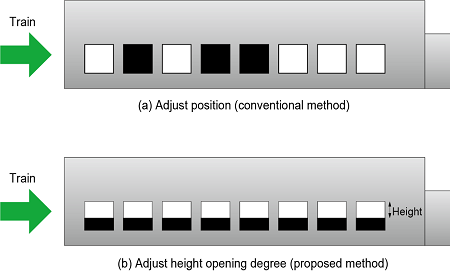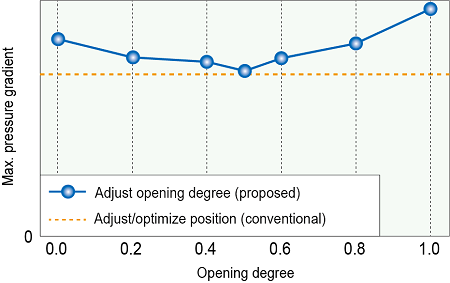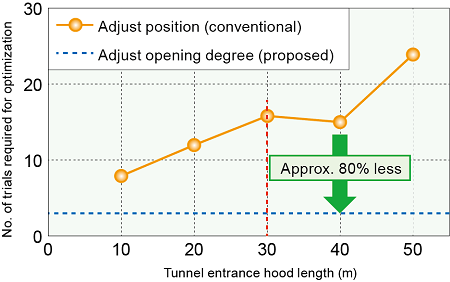18. Efficient method for adjusting openings in large tunnel entrance hoods
To fully demonstrate the performance of tunnel entrance hoods as a measure for reducing micro-pressure waves in railway tunnels, it is important to optimize the shape, position, and size of openings arranged along the sides of the structure.
As Shinkansen trains continue to get faster, tunnel entrance hoods are getting longer and including more “openings.” It is therefore becoming more difficult to optimize the conditions of the openings (open/closed) to achieve maximum effectiveness. In this study, we proposed an optimization method for uniformly adjusting the degree of opening (height or width) of all windows (Fig. 1), as opposed to the conventional approach in which the windows are either fully open or closed and optimization is performed by deciding which windows to open and close (Fig. 1) .
The new method of adjusting the degree of opening can reduce the magnitude of micro-pressure waves, which depends on the maximum pressure gradient in the tunnel, by the same degree as the conventional method (Fig. 2).
Additionally, the new method can reduce the number of trials required for optimization by about 80% for long tunnel entrance hoods of 30 m or more (Fig. 3).
When only a limited number of trials can be performed to optimize actual tunnel entrance hood openings, it is essential to make the structure longer than necessary when using the conventional method, because it is not possible to achieve the full performance potential of the tunnel entrance hood. This new method can help to reduce the length of tunnel entrance hoods at the design stage because it is possible to achieve the maximum micro-pressure wave reduction effect (or close to it) even with only a small number of trials.



